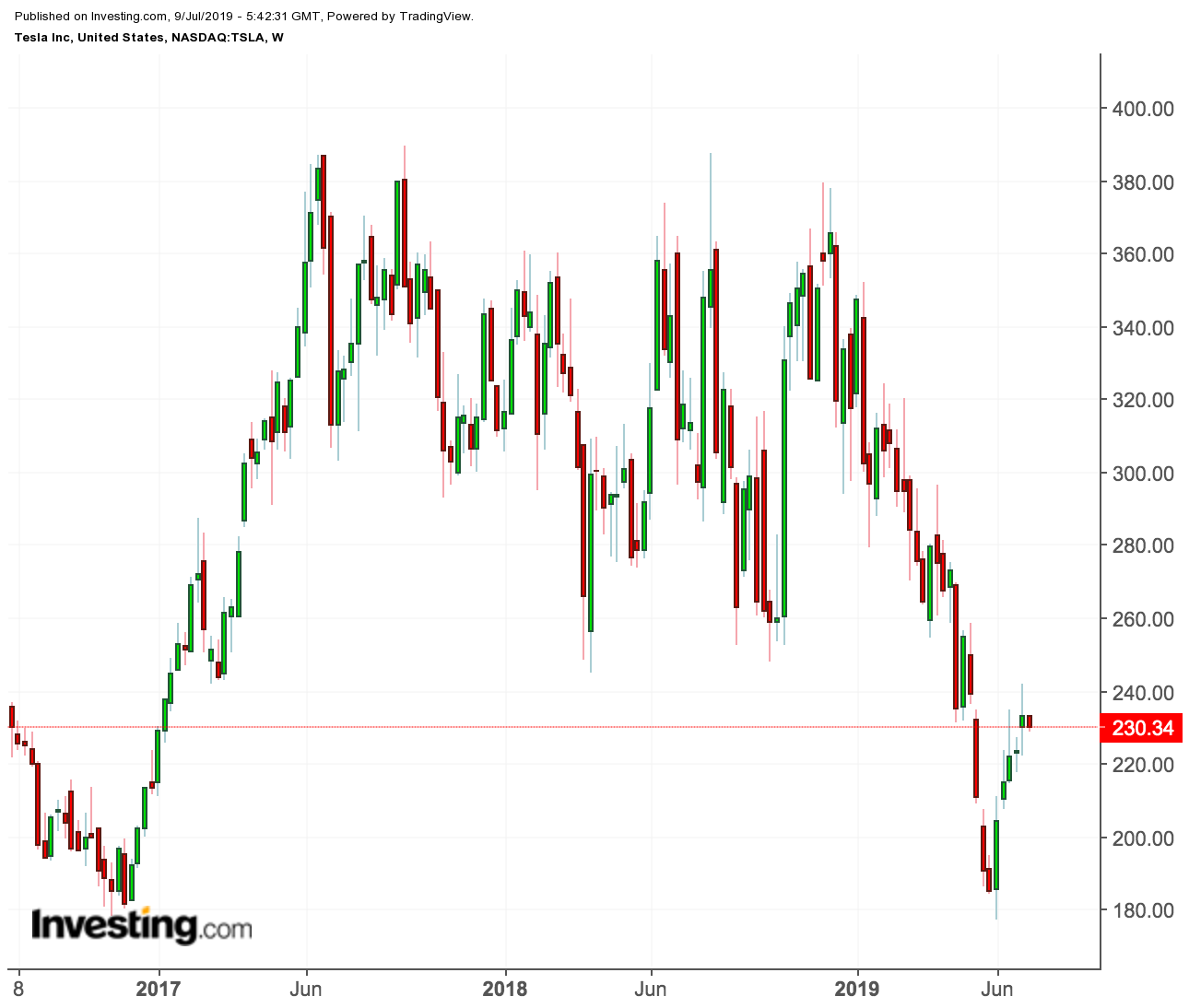After a dreadful winter and a gloomy spring, Tesla Inc. (NASDAQ:TSLA) investors are finally seeing some signs of a brighter summer.
The electric car maker last week announced a record number of deliveries, saying it shipped 95,200 cars in the second quarter, beating the previous company record of 90,700 set in the fourth quarter of 2018. Analysts were expecting about 91,000 deliveries for the period.
The headline certainly blew some fresh wind into the company's sails. Purchases of Tesla’s cheaper Model 3 sedan had dropped sharply in the first quarter, even after several rounds of price cuts.
Hurt by a series of missteps in the past year, Tesla shares had lost almost half of their value in the six months to late May. But, although they slipped in the last two sessions, the shares have gained 12.6% since the beginning of June and were trading at $230.34 at yesterday's close.

However, despite this new momentum, the troubles that Tesla is facing are far from over, in our view.
One major reason we remain concerned is that Tesla's path to profitability is still fraught with danger. Though the company was able to deliver more cars in the second-quarter due to strong demand from European markets and Canada, its higher-margin Model S and Model X are still struggling.
Combined deliveries of these models fell to 17,650 in the quarter, down more than 20% from a year ago and 50% from the previous quarter. Many analysts are concerned the cheaper Model 3 is cannibalizing the automaker’s more expensive cars, making it tougher for the company to make money in the long-run.
Ambitious Target
Even with the quarterly surge in demand, it’s still not clear whether Tesla will be able to meet its ambitious 2019 target of 360,000 to 400,000 cars. Tesla’s press release was quiet on this front. With the U.S. federal tax credit for electric vehicles shrinking for the second half of the year and ending in 2020, it will become even harder for the company to sell more cars in the U.S. in the second-half.
And Tesla may have to rely again on overseas markets to fill the gap, while at the same time keeping its shipping and logistics costs under control. Due to these lingering concerns, many Wall Street analysts aren’t yet ready to change their negative view on Tesla, notwithstanding the positive surprise of the past week.
“We continue to expect some sequential step-down in demand and ultimately deliveries as we progress into 3Q19,” Goldman Sachs’ analyst David Tamberrino, wrote in a note. Tamberrino has a “sell” rating on the stock with a price target of $158.
Barclays’ analyst Brian Johnson, who rates the stock “underweight” with a price target of $150, expressed similar views in a recent note:
“Tesla’s incentives are fiercely bent on maximizing deliveries to focus on cash generation, likely at the expense of profitability. We continue to expect a loss this quarter as well as a challenging sales/profit environment for the remainder of the year.”
Bottom Line
Tesla’s stock continues to remain a highly speculative bet. Its premium valuation compared to industry peers is hard to justify when the overall demand picture remains muddy and the company continues to face deep cash-flow issues. It would be better for investors to ignore the noise created by the upbeat delivery numbers, and instead, focus on the company’s upcoming Q2 earnings release to get more clarity.
Which stock should you buy in your very next trade?
With valuations skyrocketing in 2024, many investors are uneasy putting more money into stocks. Unsure where to invest next? Get access to our proven portfolios and discover high-potential opportunities.
In 2024 alone, ProPicks AI identified 2 stocks that surged over 150%, 4 additional stocks that leaped over 30%, and 3 more that climbed over 25%. That's an impressive track record.
With portfolios tailored for Dow stocks, S&P stocks, Tech stocks, and Mid Cap stocks, you can explore various wealth-building strategies.
